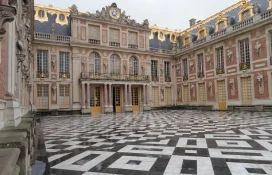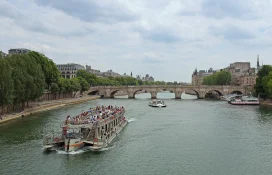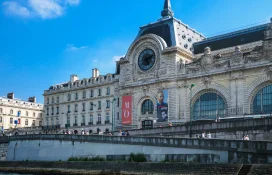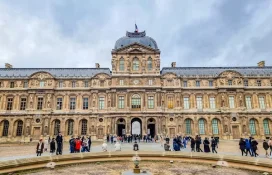Facts about Arc de Triomphe

Support when you need it
Customer service to help you with all your needs from 8:00 a.m. to 7:00 p.m.
Fast and online booking
Choose the best option for your needs and preferences and avoid the lines.
Top attraction in Paris
Discover history and stunning views at the Arc de Triomphe.
Arc de Triomphe Information
The Arc de Triomphe is one of Paris’s most iconic monuments, standing at the western end of the Champs-Élysées. Commissioned by Napoleon Bonaparte in 1806 to honor the French army’s victories during the Napoleonic Wars, its construction spanned three decades, finally completed in 1836 under King Louis-Philippe. Designed by architect Jean Chalgrin, the arch draws inspiration from ancient Roman triumphal arches but surpasses them in grandeur. Its location at the center of Place Charles de Gaulle, where 12 radiating avenues converge, symbolizes France’s historical and cultural unity. The arch has witnessed pivotal events, including the internment of the Unknown Soldier in 1921 and victory parades after both World Wars. Today, it serves as a national symbol of resilience and patriotism, attracting millions of visitors annually.
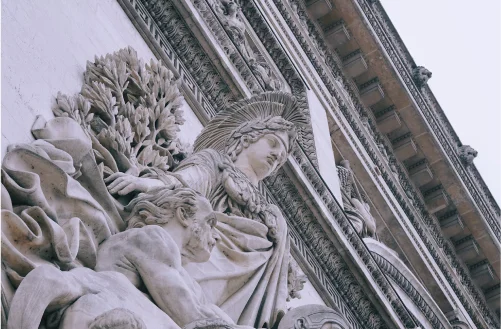
Arc de Triomphe Sculptures
The Arc de Triomphe is adorned with intricate sculptures that narrate France’s military history. The most famous is François Rude’s La Marseillaise (1836), a high-relief depicting the Departure of the Volunteers of 1792, symbolizing revolutionary fervor. Other key sculptures include Jean-Pierre Cortot’s The Triumph of 1810, celebrating the Treaty of Vienna, and Antoine Étex’s Resistance of 1814 and Peace of 1815, reflecting post-Napoleonic struggles. The attic features 30 shields engraved with names of major Napoleonic victories, while the inner walls list 660 generals, with those who died in battle underlined. These artworks collectively immortalize France’s triumphs and sacrifices.
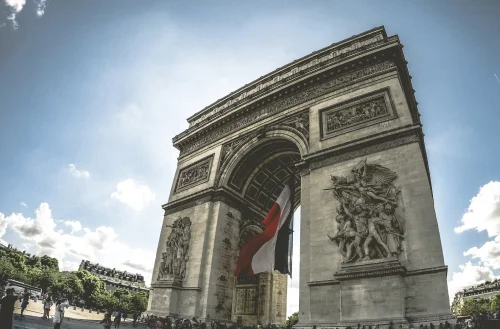
Arc de Triomphe Dimensions
The Arc de Triomphe’s imposing scale reflects its monumental purpose. Standing 50 meters (164 feet) tall, 45 meters (148 feet) wide, and 22 meters (72 feet) deep, it dominates Paris’s skyline. The central vault reaches 29.19 meters (96 feet), large enough to accommodate early 20th-century biplanes. The structure’s neoclassical design features Doric columns, intricately carved friezes, and a viewing platform atop the arch. Its massive stone blocks, sourced from quarries near Paris, weigh thousands of tons. The arch’s proportions and symmetry mirror Roman influences, yet its elaborate sculptures and inscriptions distinctly celebrate French identity.
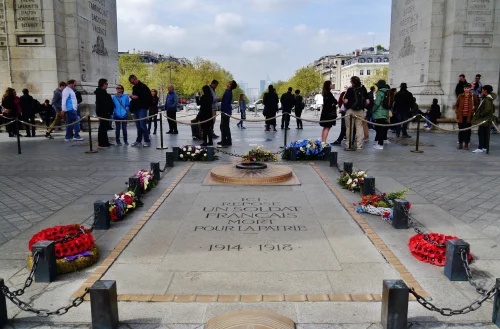
Tomb of the Unknown Soldier
Beneath the Arc de Triomphe lies the Tomb of the Unknown Soldier, interred in 1921 to honor unidentified casualties of World War I. The tomb bears the inscription: “Ici repose un soldat français mort pour la patrie” (“Here lies a French soldier who died for the fatherland”). An eternal flame, first lit in 1923, is rekindled daily in a solemn ceremony, making it the first continuous flame of its kind since antiquity. The site serves as a poignant reminder of the human cost of war and has become a focal point for national remembrance, especially on Armistice Day (November 11).
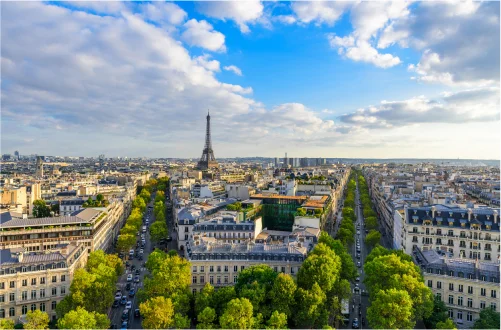
Arc de Triomphe Top View
Climbing 284 steps to the Arc de Triomphe’s rooftop offers a breathtaking panorama of Paris. From this vantage point, visitors gaze down the Champs-Élysées toward the Louvre, east to La Défense’s skyscrapers, and west to the Eiffel Tower. The terrace’s strategic position highlights Baron Haussmann’s geometric urban design, with the 12 avenues radiating like a star. The view also emphasizes the arch’s alignment with the city’s major landmarks, including the Grande Arche de la Défense. Sunset visits are particularly popular, as the golden light bathes Paris’s rooftops and monuments.
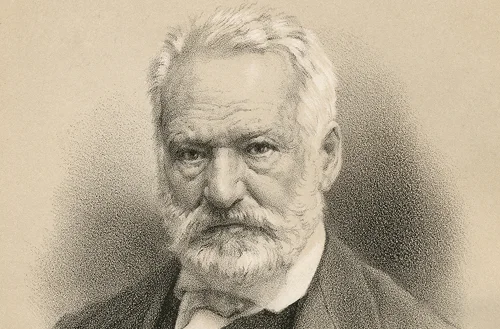
Victor Hugo & Arc de Triomphe
Victor Hugo, France’s literary titan, is forever linked to the Arc de Triomphe. Though he died in 1885, before the arch’s completion, his legacy intertwined with its symbolism. His coffin was placed beneath the arch overnight during his state funeral, drawing over two million mourners—a testament to his role in shaping French cultural identity. Hugo’s works, like Les Misérables, echo themes of national pride and social justice, mirroring the arch’s homage to collective sacrifice. His association with the monument underscores its role not just as a military tribute but as a beacon of French heritage.
FAQs About Arc de Triomphe Facts
The arch commemorates Napoleon’s victories, hosted WWI Unknown Soldier’s internment (1921), and saw WWII liberation parades (1944). It remains a site for national ceremonies.
It honors unidentified soldiers lost in WWI, embodying collective mourning. The eternal flame symbolizes enduring memory, relit daily since 1923.
The arch stands 50m tall, 45m wide, with neoclassical designs, sculpted reliefs, and a 29m-high vault. Materials include limestone and intricate carvings.
A staircase of 284 steps or an elevator (for those with limited mobility) leads to the terrace. Tickets are available onsite or online, with guided tours offering historical insights.
Other things to do in Paris

